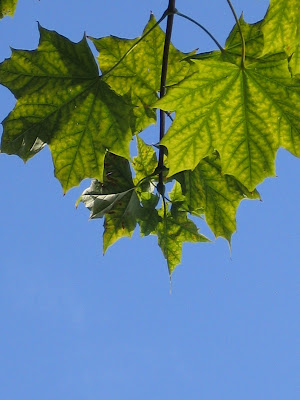
This species of heron has endangered status in Illinois which is hard to believe in our neighbourhood as they are a common sight. One evening when walking along the lake front at dusk, I saw twelve of them fishing, all within half a mile. They are also found in Europe, Asia, Hawaii and Africa. Ironically, when I lived in Zambia, where the bird is not listed as endangered or even threatened, it was a huge talking point on the rare occasion that one was spotted.

I had to be a little bit cautious with this youngster as they are know to regurgitate their food when disturbed! This particular individual seemed pretty relaxed and just started preening himself when I got my camera out!
A little further down the path was another young bird, a Great Blue Heron Ardea herodias.

These tend to be easier to see than the night herons, partly because they are so large, it is harder for them to hide, and partly because they don't skulk in vegetation during the day. They are much more likely to be seen wading around in the shallows or hunched over on a log, waiting for a passing fish.

Great Blue Herons will also eat frogs and, occasionally, small voles. They can be found beside ponds, rivers, lakes, fish hatcheries and even along the ocean shore. I took this last picture just because I thought the reflection in the water was fun!

Photo Credits - CJT























































